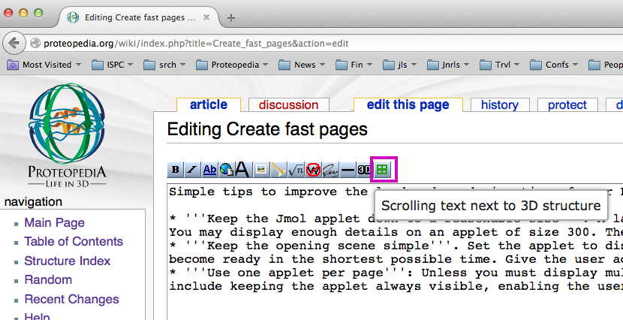Create fast pages
From Proteopedia
Simple tips to improve the load and rendering time of your Proteopedia pages.
- Keep the J(S)mol object down to a reasonable size. A larger J(S)mol object increases exponentially the demand of resources on the browser and the user computer. You may display enough details with a size of 300. The user may always click on the 'popup' button to get a full screen J(S)mol object, if needed.
- Keep the opening scene simple. Set the Jmol to display a simple and fast loading scene when loading the page. This will allow for the whole page to become ready in the shortest possible time. Give the user access to the heavier and more elaborated scenes via green links.
- Use just one J(S)mol object per page: Unless you really need simultaneous and parallel display of multiple Jmol/scenes within a page, use the one applet-scrolling layout page format. The many advantages include keeping the Jmol object always visible, enabling the user to scroll the text while reading (see image below), with the green links close to the rendering Jmol object.
- Do not use Flash movies as this extension has been removed from MediaWiki and thus will not work in Proteopedia. Instead convert the Flash movie to 'mp4' with one of many web resources available, e.g. 'SWF Converter for Mac'. A example of a page with Flash movies converted to an mp4 movie can be seen at: Alpha Subunit of Thermus aquatics DNA Polymerase III.

